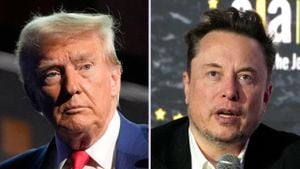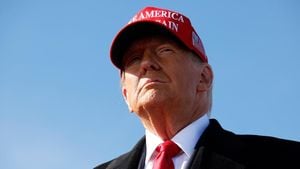India is currently grappling with significant economic challenges, characterized by rising inflation and slowing consumer spending. The nation, which had previously been on track for impressive growth post-pandemic, is now facing new hurdles as the cost of living rises, particularly food inflation, which has placed strain on household budgets.
Recently, the Reserve Bank of India (RBI) Governor, Shaktikanta Das, addressed these issues, warning about the potential return of inflation and its impact on economic growth. Speaking at the CNBC-TV18 Global Leadership Summit, he stated, "A soft landing has been ensured, but risks of inflation coming back and growth slowing down do remain." Das also pointed out the continued geopolitical conflicts and the rollercoaster nature of commodity prices, alongside climate change being persistent headwinds facing the economy.
Despite these challenges, Das expressed optimism about the overall resilience of India's economy. He noted, "The Indian economy has sailed very well through the prolonged period of turbulence, and it exhibits resilience." This remark highlights the strength shown by India against broader global economic fluctuations, as the country maintains substantial foreign exchange reserves. Currently, those reserves stand at approximately USD 682 billion, enough to cover external debts and around 12 months of merchandise imports.
Meanwhile, the RBI has maintained its repo rate at 6.5%, sustaining this level for the 10th consecutive time. This policy aims to keep inflation within manageable limits, yet food prices have remained stubbornly high, complicatively affecting the central bank's efforts.
The sentiment among consumers, especially those within India's middle class, has begun to shift. There’s growing trepidation surrounding spending habits, influenced by soaring prices of everyday items. India’s middle-class households, which make up roughly one-third of the population, are increasingly tightening their belts. Various reports suggest reductions in spending on non-essential goods, from fast food to premium consumer products. Notably, major companies such as Nestlé India have reported declines in revenue, attributed to this changed consumer behavior.
According to industry experts, the effects are visible, with urban consumption slipping downwards. A recent Citibank report highlighted concerning trends, pinpointing urban spending had reached its lowest levels within two years. This downturn presents questions about India’s long-term growth, as urban consumers—who played a pivotal role during the recovery from COVID-19—cut back on their purchases due to financial strain.
"We are the fastest-growing economy in the world [but] we can do even- )better," said Piyush Goyal, India’s Union Minister of Commerce, who called for adjustments to monetary policy to spur economic growth. Although there is optimism about the overall GDP growth, which the RBI projects will be around 7.2% for the fiscal ending March 2025, the rising inflation and constraints on consumer spending cast uncertainty over these predictions.
At the same time, HSBC's examination of economic indicators reveals 55% of sectors are still growing; this is down from 65% at the start of the year. The data presents mixed signals: agriculture appears healthier compared to other sectors, with 60% of its indicators currently positive. Conversely, manufacturing sectors, especially those related to consumer goods, show signs of weakness.
While the urban middle class feels squeezed, rural demand remains buoyant, aided by favorable weather conditions boosting agricultural output. This rural resilience may be pivotal as policymakers look to stimulate economic momentum through increased government spending, which could ignite private consumption patterns as well.
Still, the shadows of inflation linger long. With food inflation surpassing 8% and overall retail inflation marking 6.2%—a 14-month high—challenges remain pressing and personal finances could dictate broader economic performance. Households are feeling the pinch, evidenced by anecdotal reports of reduced festive spending this season. For the urban consumer like Rajwanti Dahiya, monthly restrictions signal tighter budgets: "During this festival season, we have not spent at all. Savings are low, barely there," she shared, emphasizing the feeling of economic strain.
Economic analysts predict this tightening of budgets could reverberate across economic sectors, especially those heavily reliant on consumer spending. "If government spending kicks in, [it] probably does have some multiplier effects on private consumption spending as well," notes economist Rahul Bajoria from Bank of America. Such dependency on public intervention might steer India’s recovery as households navigate their way through the challenges posed by rising inflation.
The current economic outlook for India is riddled with complexity but not devoid of hope. While inflation and changing consumer behaviors suggest tough times lie ahead, the nation’s foundational economic metrics might provide sufficient groundwork for resilience. Whether the RBI's monetary policies will effectively tackle inflation, mitigate the effects on consumers, and instill confidence within the market remains to be seen. Stakeholders will be eagerly watching the upcoming monetary policy meeting due on December 5, 2024, as it could shape the direction of India's economy moving forward.



